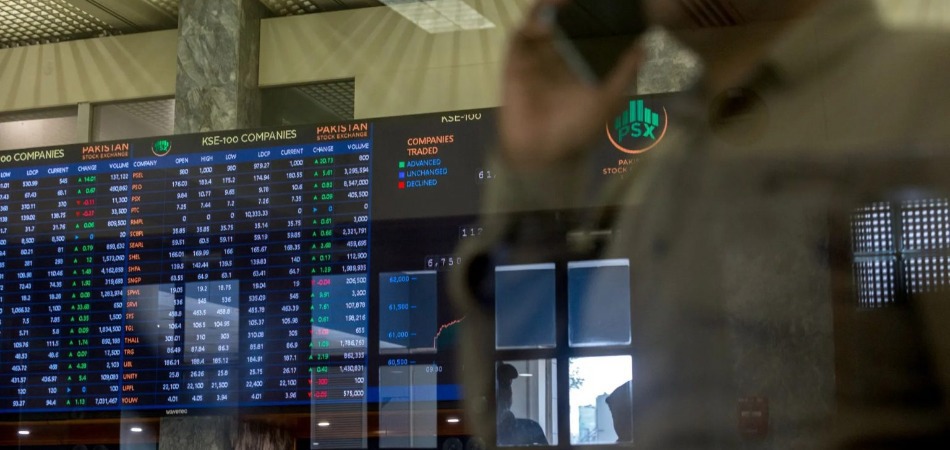Pyramiding: Add to your winners, not your losers.

Abu Ahmed | April 20, 2025 at 08:46 AM GMT+05:00
During the start of my career, I heard saying a seasoned investor over a cup of tea, ‘It’s safer to buy a stock after an upward reversal in its price than to do so while it’s price is plummeting uncontrollably.”
On the face of it, the remark sounded like a critique of the conventional strategy of averaging down by purchasing more shares as prices decline. However, as I progressed in my career, the wisdom behind those words gradually revealed itself, layer by layer. What had initially seemed like skepticism toward a time-tested approach gradually emerged as a strategy that prioritized confirmation over speculation, safety over gambling, and stability over volatility.
The process is straightforward. It typically begins with a speculative entry or a breakout in price, prompting the investor to take an initial fixed position. As the price appreciates, additional shares are purchased at predefined price intervals and added to the original holding. This tiered accumulation continues as long as the upward momentum is sustained. Eventually, the consolidated position is sold at a higher price to realize profits.
As with each successive purchase, the investment tiers ascend, forming a structure that resembles pyramid—hence got the name Pyramiding Strategy. When the strategy is applied in conjunction with momentum investing and executed through multiple tiers of progressively smaller subsequent investments, it usually leads to significantly amplified returns.
Framework for Disciplined Pyramiding:
Despite apparent simplicity, a disciplined approach is must for effective Pyramiding. Here’s a structured framework offers clear stages for effective pyramiding:
a-Defining of Overall Dimension of Pyramid:
a(i)- How many levels the pyramid will have?
a(ii)- At what price levels new position to be added?
b-Laying down the Foundation:
b(i)- Open initial position upon confirmation of breakouts.
b(ii)- The size of Initial position should be larger enough to serve as foundation for subsequent positions
c-Building the Pyramid:
c(i)- Wait for the price to hit the next pre-defined levels to add new position.
c(ii)-Subsequent positions should be smaller in size than the previous ones.
d-Locking in Profit:
d(i)- Set profit targets to lock in gains before the trend reverses
d(ii)- Sell the holdings once price target hits.
How to Do Profitable Pyramiding?
Since pyramiding involves adding to winning positions as a trend develops, therefore, pyramiding in general known as a Technical Investing. And Technical Indicators that signal breakouts, confirms trend continuation, and measures strength of trends are essential for a profitable Pyramiding.
For consistent and favorable outcomes, Pyramiding should only be done in the presence of a strong and sustainable trend—not during volatile, short-lived price spikes. As without solid directional momentum, the strategy loses its edge and can lead to devastating losses.
Moreover, when technical investing synergizes with fundamental investing, it transforms pyramiding into a more precise and reliable strategy. This synergy can be ensured, first, by limiting pyramiding to fundamentally strong and highly tradeable stocks; and second, by conditioning it within the framework of the Theory of Reflexivity.
The opening of Reflexivity “Once a stock price started rising it will keep rising” prompts investors to take initial position, the middle one “When price actually to rise, it reinforces investors’ belief that price will continue to rise” motivates them to increases exposure to a winning position to build pyramid and the closing remark “there would eventually will come a point from where a reversal in price will set in” signals investors to actualize profit by through Reverse-Pyramiding.
Managing Risks of Pyramiding:
Though integration of technical signals, fundamental strength, and behavioral insight—rooted in the Theory of Reflexivity—enables a more comprehensive approach to risk management, however, does not offer immunity from risk. Investors may still suffer significant losses if caught by a false signal or an abrupt, sharp reversal in price.
A more resilient approach to risk management lies in defining a stock universe specifically for pyramiding and then progressing from building the pyramid to eventually reversing it. A brief description of this approach is as under:
Risk Management at Stock Selection Stage:
Pyramiding can be applied to both speculative and non-speculative stocks. However, speculative stocks often come with an unfavorable risk-reward ratio. Moreover, the ability to accurately identify trends—essential for effectively transitioning from pyramiding to reverse pyramiding—demands a level of experience and investment discipline that many investors lack. When pyramiding fails with a speculative stock, the consequences can be severe.
Therefore, it’s prudent to apply this strategy to fundamentally strong, highly liquid stocks that exhibit moderate speculative characteristics. Defining a well-curated universe of such stocks is the first and most critical step in mitigating the inherent risks of pyramiding from the outset
Risk Management While Building of Pyramid:
Once a stock is selected from the defined universe, the risk management process becomes largely mechanical. This includes initiating a position with a fraction of the available capital, ensuring that each subsequent position is smaller than the previous one, adding to the position only when the price breaks through successive resistance levels, and setting stop-losses to limit potential losses.
A more comprehensive, adaptive approach to risk management at the operational level can be achieved by applying the Theory of Reflexivity. The following illustration offers a practical insight into how this theory can enhance decision-making and risk control in real-time market dynamics.
| # | Reflexivity Stages | What does it suggest? | Suggested Action |
| 1 | Upwardly Breakout of Price | Breaks out from a consolidation phase or trading range suggests that market participants are willing to accept a new level of valuation |
Take initial position |
| 2 | Breakout Confirmation | Breakout with increased volume is a sign of sustainable upward trend. It suggests that Traders and investors start viewing the new level as a fresh baseline. | Define the price levels where more share to be purchased to add to initial position. |
| 3 | Upward Continuity of Trend | Reinforces the new trend, potentially leading to an extended rally. | Times to add to winning positions. |
| 4 | Reversal in trend | High selling volume at Resistance | Lock in Profit by resorting to Reverse-Pyramiding |
Final Word on Pyramiding:
In conclusion, pyramiding when executed with discipline, guided by a well-defined stock universe, and supported by sound risk management principles can be a powerful strategy for capital growth. However, its success hinges on the investor’s ability to remain objective, respond to market signals, and exit positions with precision.
One of the earliest adopters of Pyramiding Livermore Jesse, legendary American stock trader, quoted as
“Let your Winner Run, and Cut your Losers Short”
Related News
| Name | Price/Vol | %Chg/NChg |
|---|---|---|
| KSE100 | 136,502.54 259.91M |
1.64% 2202.77 |
| ALLSHR | 85,079.90 838.35M |
1.26% 1061.74 |
| KSE30 | 41,552.62 97.27M |
1.81% 738.33 |
| KMI30 | 193,330.76 84.69M |
0.39% 741.60 |
| KMIALLSHR | 56,315.31 366.02M |
0.43% 243.06 |
| BKTi | 38,498.08 37.91M |
4.13% 1526.33 |
| OGTi | 28,138.38 5.66M |
-0.36% -101.89 |
| Symbol | Bid/Ask | High/Low |
|---|
| Name | Last | High/Low | Chg/%Chg |
|---|---|---|---|
| BITCOIN FUTURES | 120,035.00 | 123,615.00 118,675.00 |
1505.00 1.27% |
| BRENT CRUDE | 69.31 | 71.53 69.08 |
-1.05 -1.49% |
| RICHARDS BAY COAL MONTHLY | 97.50 | 0.00 0.00 |
0.25 0.26% |
| ROTTERDAM COAL MONTHLY | 106.50 | 106.60 106.50 |
-2.20 -2.02% |
| USD RBD PALM OLEIN | 998.50 | 998.50 998.50 |
0.00 0.00% |
| CRUDE OIL - WTI | 67.10 | 69.65 66.84 |
-1.35 -1.97% |
| SUGAR #11 WORLD | 16.31 | 16.67 16.27 |
-0.26 -1.57% |
Chart of the Day
Latest News
Top 5 things to watch in this week
Pakistan Stock Movers
| Name | Last | Chg/%Chg |
|---|
| Name | Last | Chg/%Chg |
|---|



